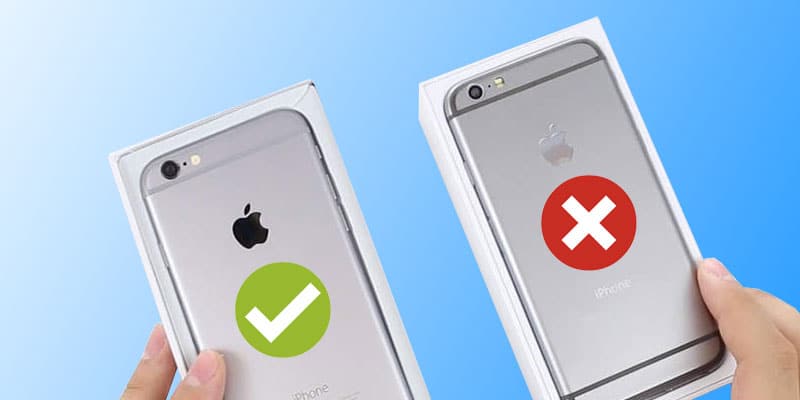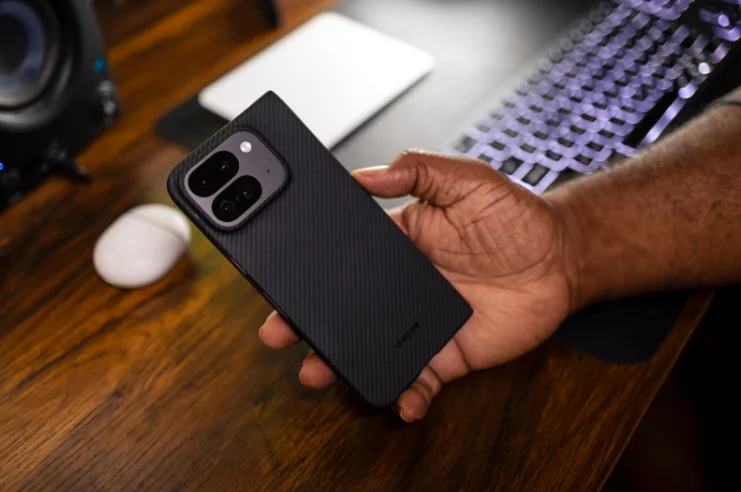
With smartphones being such an integral part of our lives, the market for them is booming. However, this demand has also led to an increase in counterfeit phones that look strikingly similar to the real deal but fall short in performance, quality, and longevity. Whether you’re buying a phone online or from a store, it’s crucial to know how to spot a fake. Here are some tips to help you identify a counterfeit smartphone.
- Inspect the packaging and accessories
One of the first things you should look at when buying a smartphone is the packaging. Genuine smartphones usually come in high-quality packaging with attention to detail. The box should be sturdy, with clean, clear printing and a smooth finish. Counterfeit phones, on the other hand, often come in flimsy boxes with blurry printing and poor-quality materials.
Also, take a close look at the accessories inside the box. Original accessories, like chargers and earphones, should feel solid and be well-made. The cables should fit snugly into the ports, and the overall presentation should feel premium. If the accessories seem cheap or don’t match the branding and quality you’d expect, that’s a red flag.
Another telltale sign is the presence of spelling mistakes or incorrect logos on the packaging or accessories. Major brands are meticulous about their branding, so errors in logos or text are almost always a sign of a counterfeit product.
- Check the build quality
The build quality of a smartphone is another key indicator of authenticity. Genuine smartphones are built with precision and attention to detail, using high-quality materials. Counterfeit phones, however, often cut corners on materials and craftsmanship.
Start by examining the phone’s body. Check for any gaps between the screen and the frame, or between the buttons and the casing. The buttons on a real smartphone should feel firm and responsive, with no wobbling. If the buttons feel loose or make a rattling sound, it’s likely a fake.
Pay attention to the weight of the phone as well. Counterfeit phones are often lighter than the real ones because they use cheaper, less durable materials. A genuine smartphone will have a certain heft to it, giving it a solid, premium feel.
By the way, the screen resolution and brightness on a counterfeit phone may be lower, resulting in a less vibrant display. If the screen doesn’t look as sharp or clear as you’d expect, it’s worth digging deeper to verify the phone’s authenticity.
- Verify the software and user interface
Software is where many counterfeit phones fall short. While the hardware might look convincing, the software is often poorly replicated. One of the easiest ways to identify a fake smartphone is by examining the operating system and user interface.
Start by checking the version of the operating system. Go to the settings and look for software information. Genuine smartphones come with the latest official software from the manufacturer. If the phone claims to be running a version of the OS that doesn’t match what you know to be the latest or what the manufacturer offers, that’s a red flag. Additionally, some counterfeit phones might mimic the look of a popular OS but lack the functionality and fluidity of the real thing.
Another sign to watch out for is the presence of unusual or unnecessary pre-installed apps. While it’s normal for manufacturers to include their own apps, a phone loaded with suspicious apps right out of the box could indicate a counterfeit. These apps might even be disguised as legitimate software but could contain malware or spyware.
It’s also worth noting how the phone handles updates. Genuine phones will regularly receive updates directly from the manufacturer. If the phone never prompts you to update or if the update process feels off, you might be dealing with a fake.
- Compare the IMEI number
Every legitimate smartphone comes with a unique International Mobile Equipment Identity (IMEI) number, which is used to identify the device on the mobile network. This number is crucial for verifying the authenticity of the phone.
To find the IMEI number, you can usually dial *#06# on the phone, and it should appear on the screen. Alternatively, you can find the IMEI number in the phone’s settings under the “About” section, or on the box the phone came in.
Once you have the IMEI number, you can check it on the manufacturer’s official website or use an online IMEI checker to see if the phone is genuine. If the IMEI number doesn’t match the information provided by the manufacturer or if the phone doesn’t have an IMEI number at all, it’s almost certainly a counterfeit.
Additionally, check if the IMEI number on the box matches the one on the phone itself. Any discrepancy between these numbers is a major red flag.
- Test the phone’s performance
Performance testing can also reveal whether a smartphone is authentic or not. Counterfeit phones often use lower-quality components, which can lead to slower performance, glitches, and overall poor user experience.
Start by navigating through the phone’s interface. Pay attention to how smoothly it operates. Genuine smartphones typically offer a seamless experience with little to no lag. If you notice significant lag when opening apps, scrolling, or multitasking, the phone might be a fake.
You can also test the camera quality, which is a big selling point for many smartphones. A counterfeit phone will usually have a lower-quality camera, with photos that are grainy or blurry compared to the high-resolution images you’d expect from a genuine device.
Battery life is another area where counterfeit phones often falter. If the battery drains unusually fast or takes an excessively long time to charge, these could be signs that the phone isn’t authentic.
Conclusion
In a world where counterfeit smartphones are becoming increasingly sophisticated, it’s essential to know how to spot a fake. By inspecting the packaging, checking the build quality, verifying the software, comparing the IMEI number, and testing the phone’s performance, you can protect yourself from ending up with a counterfeit device.
Being vigilant and taking the time to examine these details can save you from the frustration and potential financial loss that comes with buying a fake smartphone.Remember, if a deal seems too good to be true, it probably is. Always buy from reputable sellers and don’t hesitate to ask questions if something doesn’t feel right. Your smartphone is an investment, so it’s worth ensuring that what you’re getting is the real deal. For the same reason, always contact a trustworthy smartphone repair shop when you need your device repaired.

The Hidden Business Power of Storytelling Through Books

Diamond Painting Apps & Digital Tools for 2025 Artists

Meeting Global Tastes: The Versatility of Commercial Tortilla Makers

Accelerating drug discovery through the DEL-ML-CS approach

AI in Marketing Is No Longer a Buzzword — It’s the Strategy

The Full Guide To Penetration Testing

Pixel 10 Pro Fold Case: Why Choose Aramid Fiber?

MT4 for Mac vs Windows: Which Version Works Better for Traders








